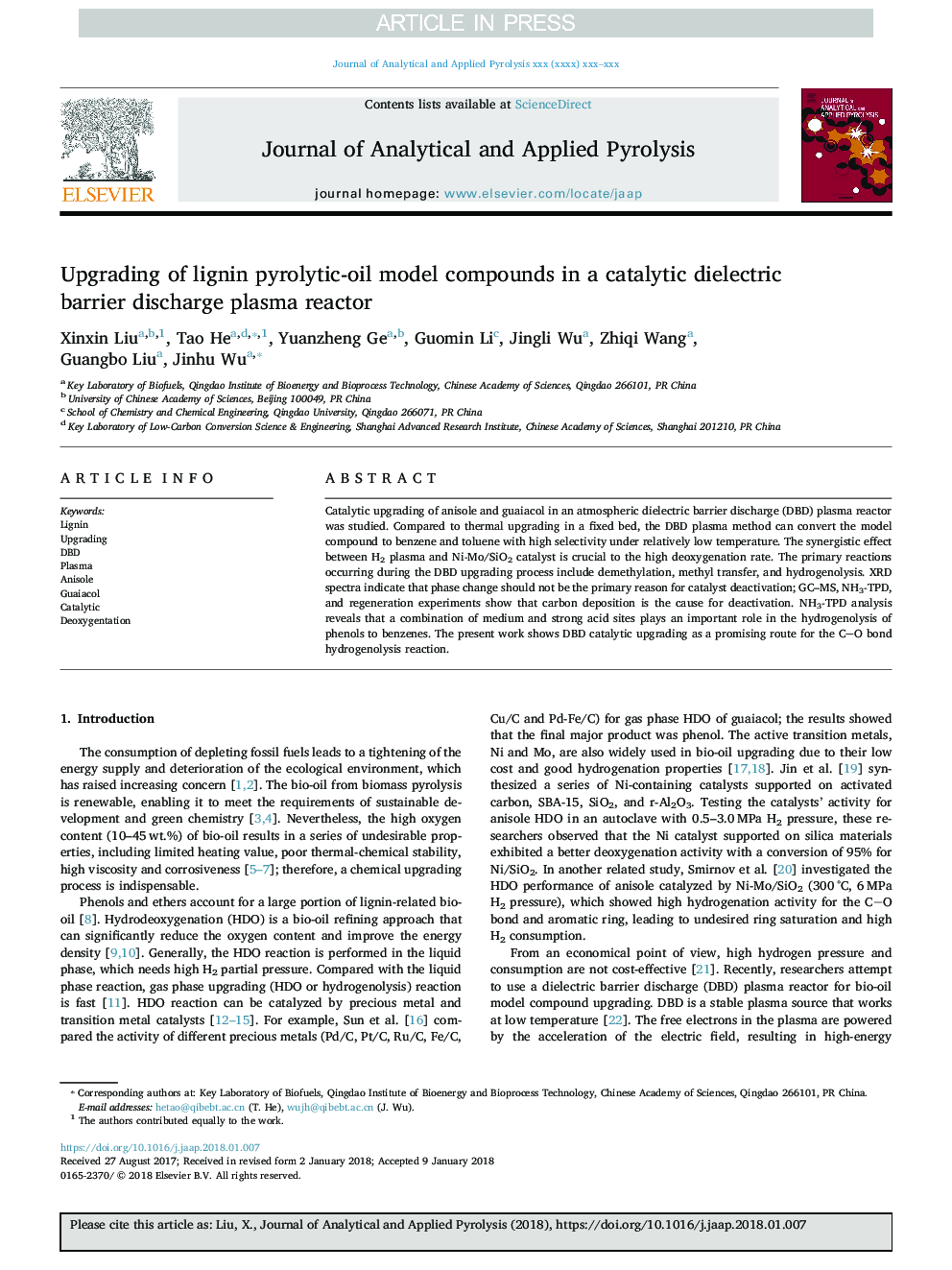| Article ID | Journal | Published Year | Pages | File Type |
|---|---|---|---|---|
| 7606364 | Journal of Analytical and Applied Pyrolysis | 2018 | 6 Pages |
Abstract
Catalytic upgrading of anisole and guaiacol in an atmospheric dielectric barrier discharge (DBD) plasma reactor was studied. Compared to thermal upgrading in a fixed bed, the DBD plasma method can convert the model compound to benzene and toluene with high selectivity under relatively low temperature. The synergistic effect between H2 plasma and Ni-Mo/SiO2 catalyst is crucial to the high deoxygenation rate. The primary reactions occurring during the DBD upgrading process include demethylation, methyl transfer, and hydrogenolysis. XRD spectra indicate that phase change should not be the primary reason for catalyst deactivation; GC-MS, NH3-TPD, and regeneration experiments show that carbon deposition is the cause for deactivation. NH3-TPD analysis reveals that a combination of medium and strong acid sites plays an important role in the hydrogenolysis of phenols to benzenes. The present work shows DBD catalytic upgrading as a promising route for the CO bond hydrogenolysis reaction.
Related Topics
Physical Sciences and Engineering
Chemistry
Analytical Chemistry
Authors
Xinxin Liu, Tao He, Yuanzheng Ge, Guomin Li, Jingli Wu, Zhiqi Wang, Guangbo Liu, Jinhu Wu,
